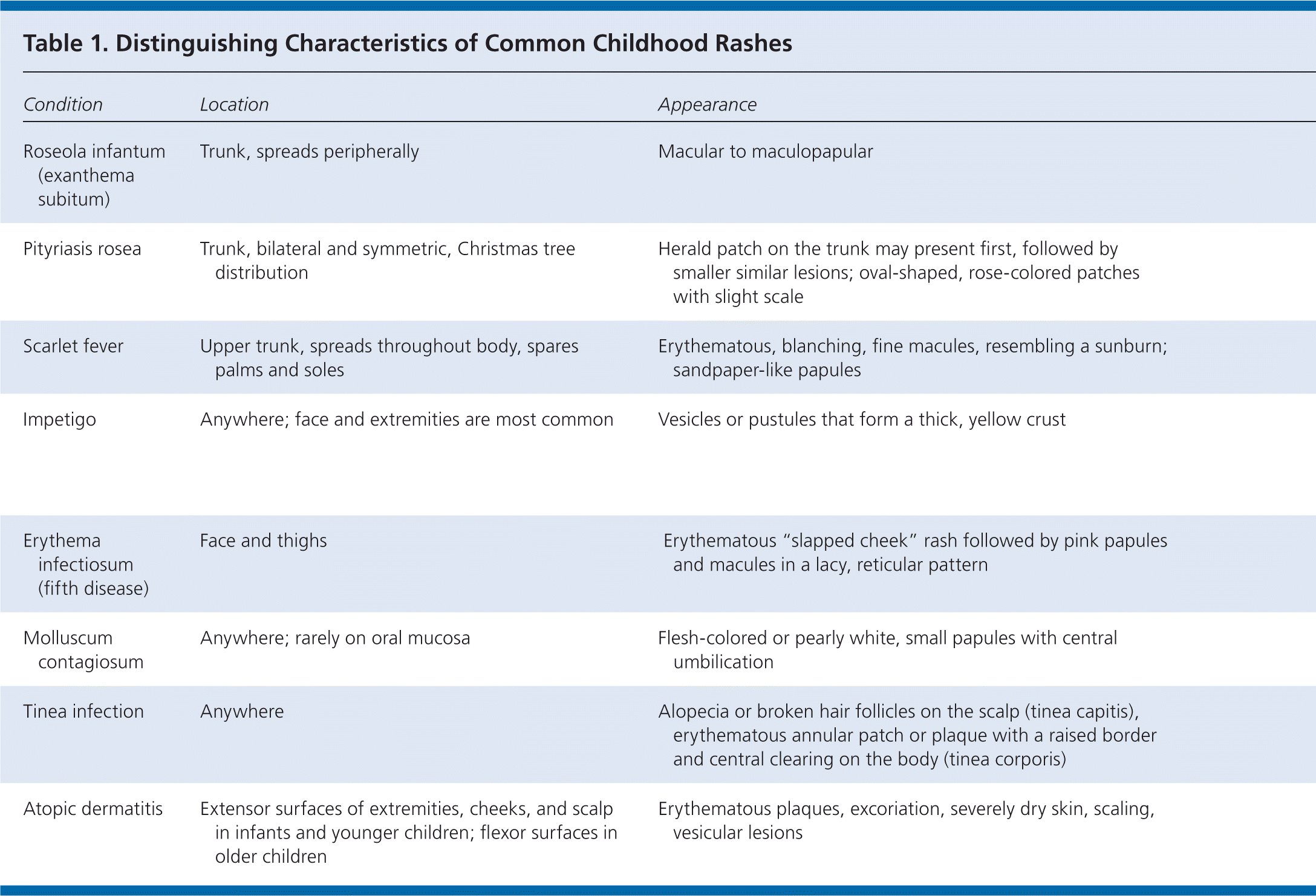| Roseola infantum (exanthema subitum) | Trunk, spreads peripherally | Macular to maculopapular | High fever, usually greater than 102°F (39°C), precedes the rash; child is otherwise well-appearing | No | Can be confused with measles; measles rash begins on the face, and the child is usually ill-appearing | 1 to 2 days |
| Pityriasis rosea | Trunk, bilateral and symmetric, Christmas tree distribution | Herald patch on the trunk may present first, followed by smaller similar lesions; oval-shaped, rose-colored patches with slight scale | No | Occurs in up to one-half of patients | Often confused with tinea corporis; pityriasis rosea is typically widespread, whereas tinea corporis usually causes a single lesion | 2 to 12 weeks |
| Scarlet fever | Upper trunk, spreads throughout body, spares palms and soles | Erythematous, blanching, fine macules, resembling a sunburn; sandpaper-like papules | Occurs 1 to 2 days before rash develops | Usually no | Petechiae on palate; white strawberry tongue; test positive for streptococcal infection | Several weeks |
| Impetigo | Anywhere; face and extremities are most common | Vesicles or pustules that form a thick, yellow crust | Usually no | No | May be a primary or secondary infection; bullous form is typical in neonates, and nonbullous form is more common in preschool- and school-aged children | Usually self-limited but often treated to prevent complications and spread of the infection |
| Erythema infectiosum (fifth disease) | Face and thighs | Erythematous “slapped cheek” rash followed by pink papules and macules in a lacy, reticular pattern | Low grade | Yes | May be confused with scarlet fever; the slapped cheek rash can differentiate erythema infectiosum | Facial rash lasts 2 to 4 days; lacy, reticular rash may last 1 to 6 weeks |
| Molluscum contagiosum | Anywhere; rarely on oral mucosa | Flesh-colored or pearly white, small papules with central umbilication | No | Yes, if associated with dermatitis | Usually resolves spontaneously without treatment | Months or up to 2 to 4 years |
| Tinea infection | Anywhere | Alopecia or broken hair follicles on the scalp (tinea capitis), erythematous annular patch or plaque with a raised border and central clearing on the body (tinea corporis) | No | Yes | Often confused with pityriasis rosea; potassium hydroxide microscopy can help confirm diagnosis | Usually requires antifungal treatment |
| Atopic dermatitis | Extensor surfaces of extremities, cheeks, and scalp in infants and younger children; flexor surfaces in older children | Erythematous plaques, excoriation, severely dry skin, scaling, vesicular lesions | No | Yes | Emollients and avoidance of triggers are the mainstay of treatment; topical corticosteroids may be needed for flare-ups | Chronic, relapsing |
